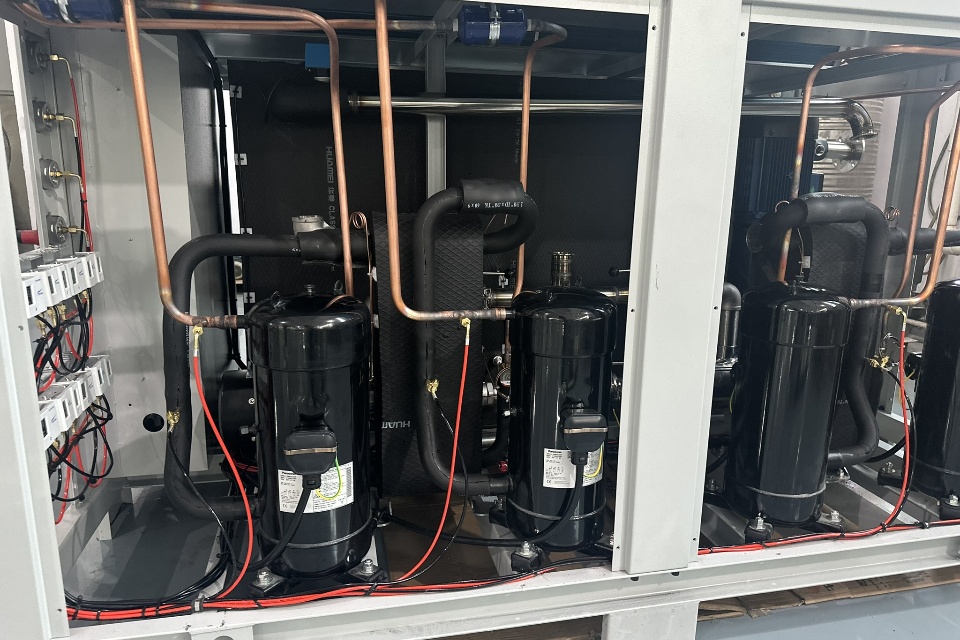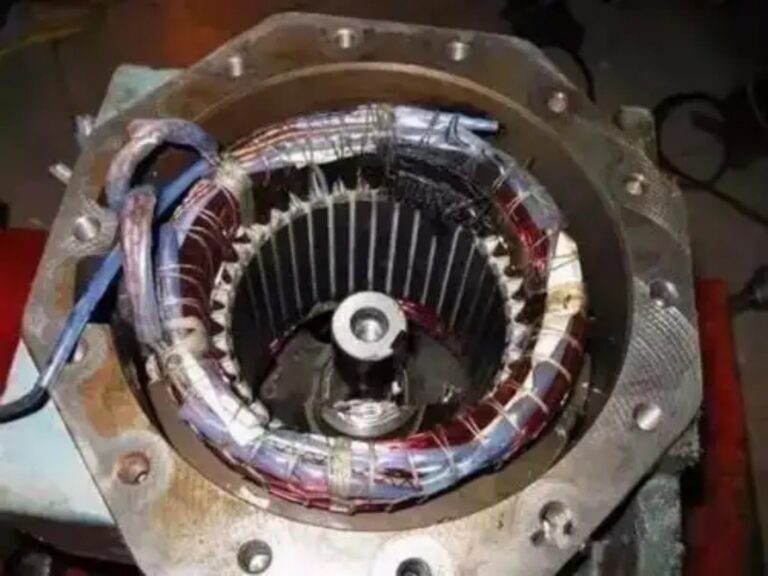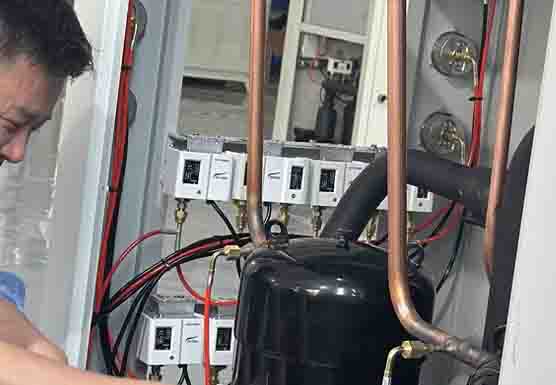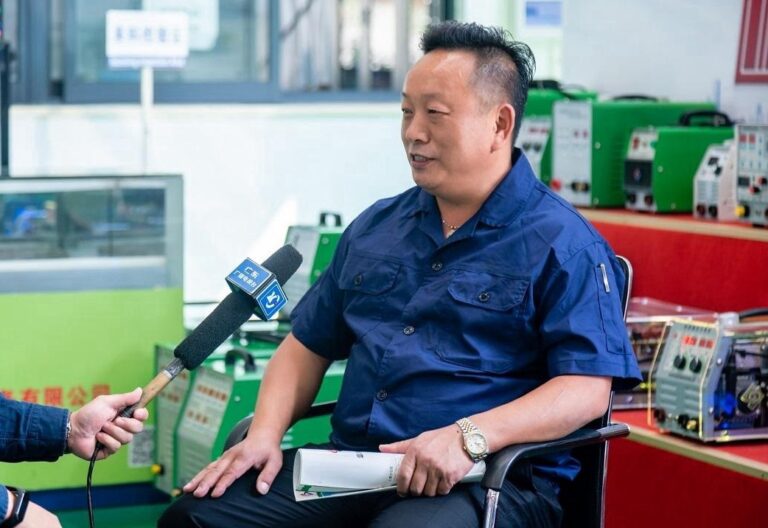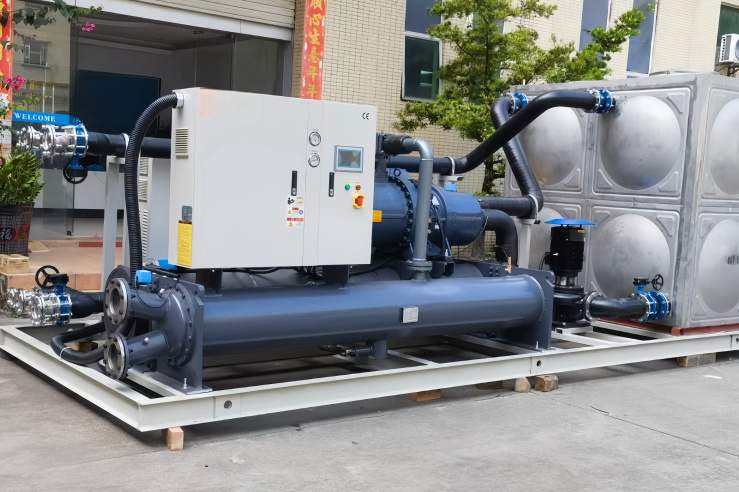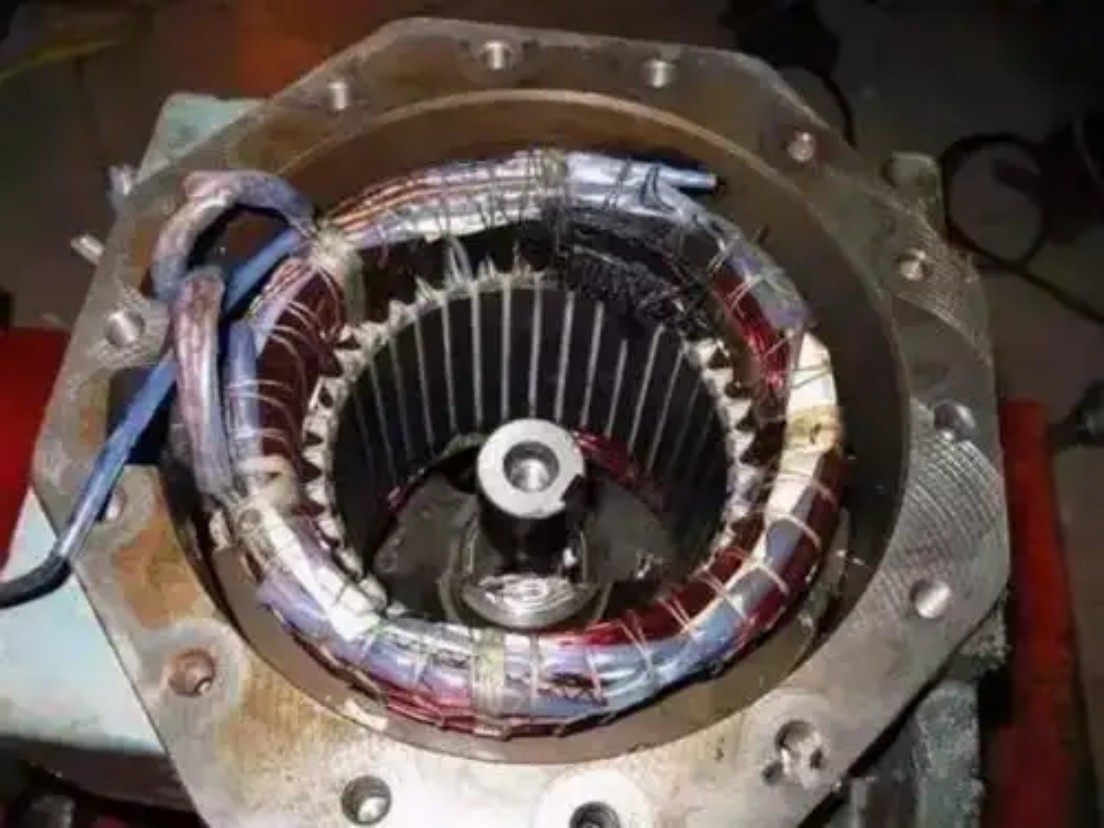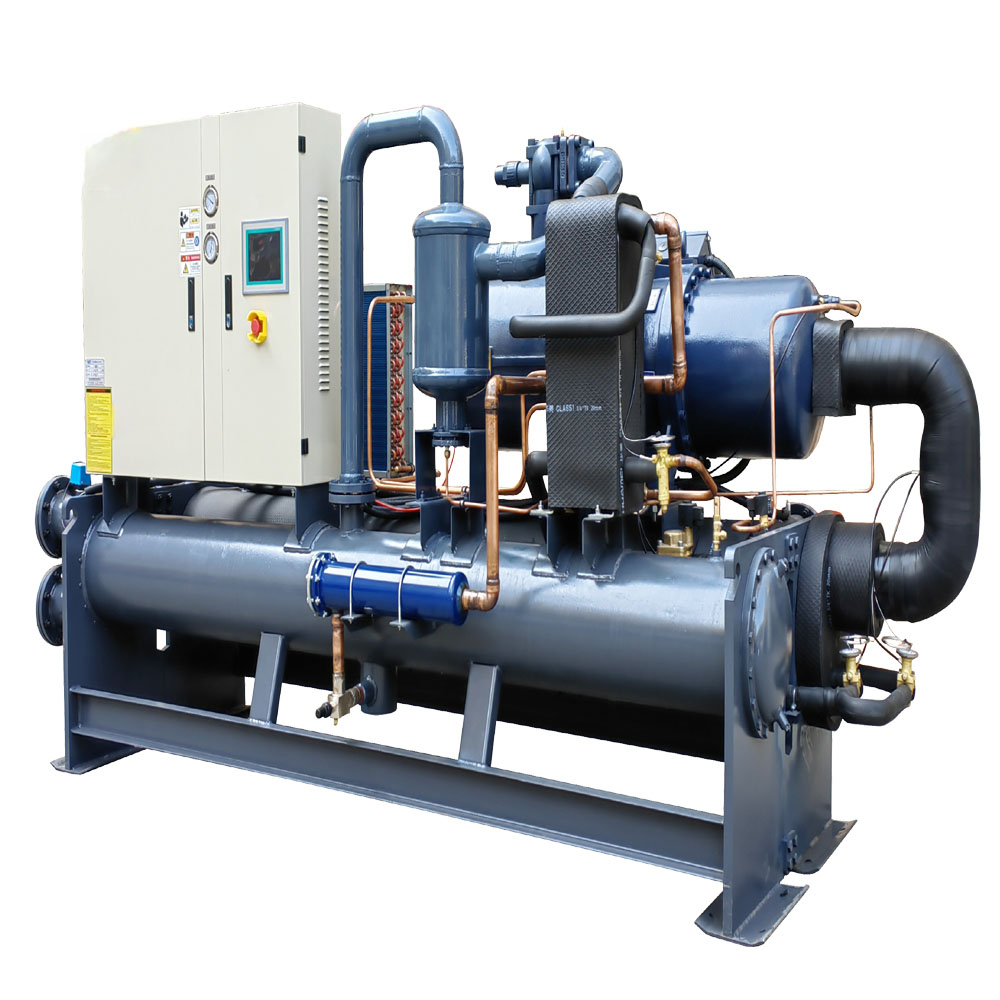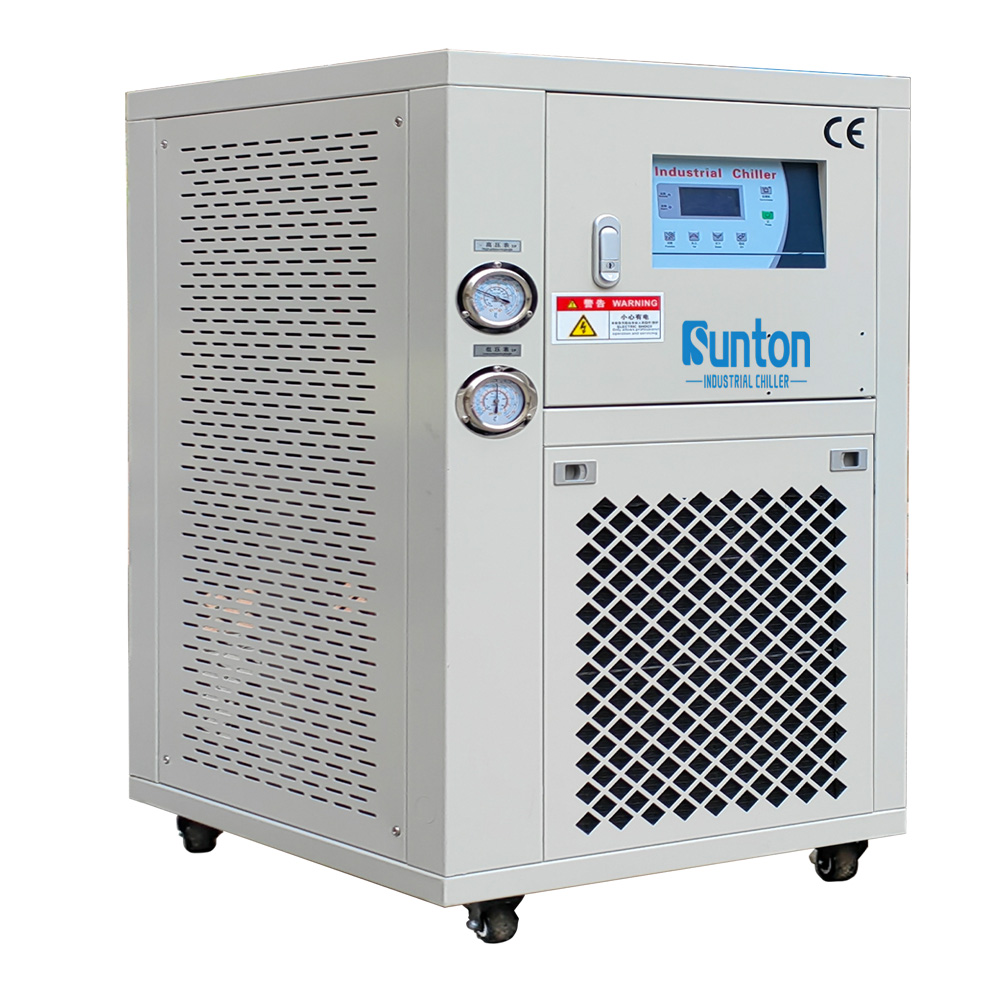-
Dalingshan Industrial Guangdong
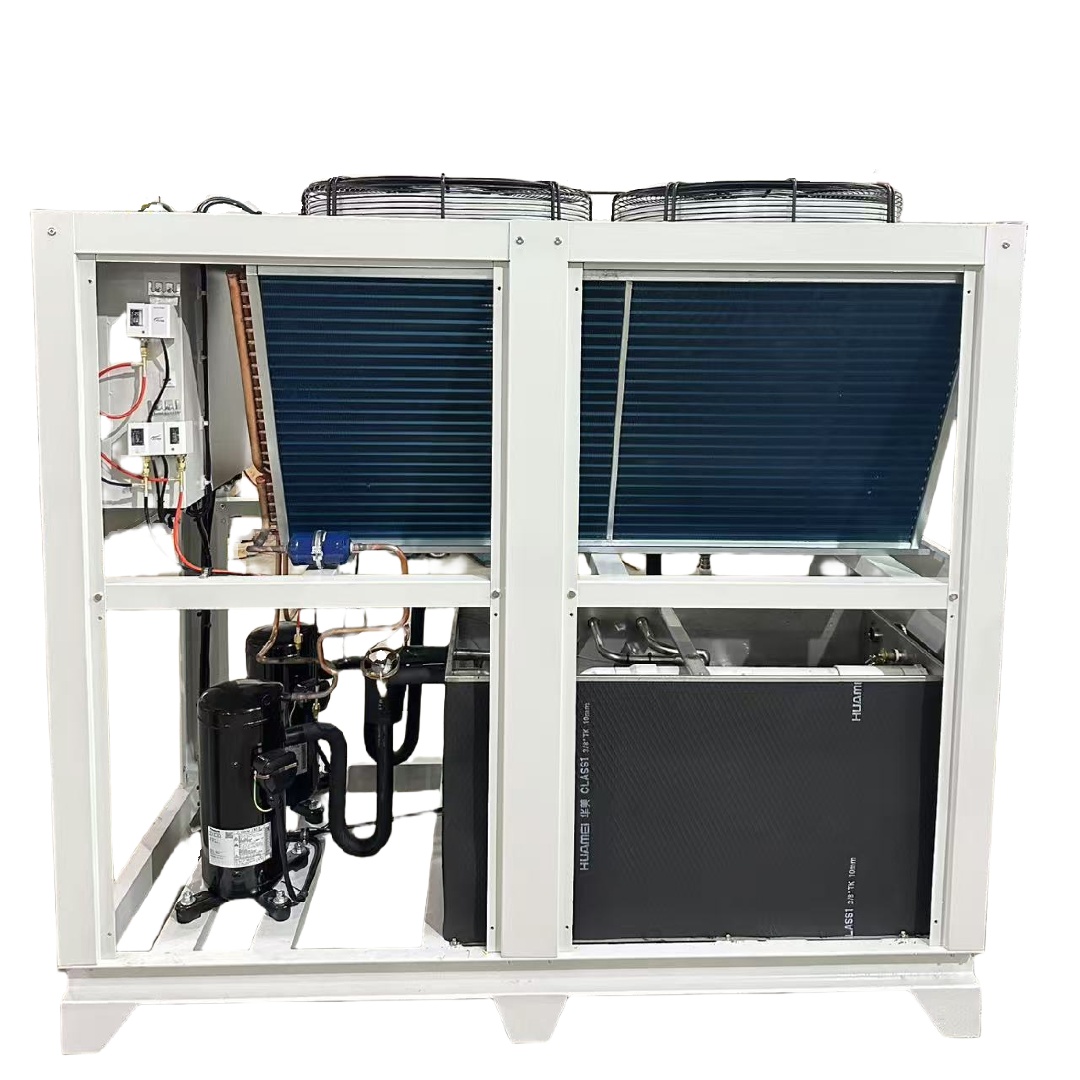
como os resfriadores de água e as unidades de tratamento de ar funcionam juntos
Como os resfriadores e as unidades de tratamento de ar funcionam juntos no seu sistema HVAC
Este artigo explora a intrincada relação entre resfriadores e unidades de tratamento de ar (UTA) dentro de Sistemas HVAC, com foco em como esses componentes colaboram para fornecer eficiência resfriamento soluções. Como fabricante líder de soluções industriais resfriadores de água, entendemos a importância de um serviço confiável e eficiente sistema de resfriamento para várias indústrias. Quer você esteja na indústria de plásticos e borracha, na indústria de usinagem ou gerencie um data center, entender como seu Sistema HVAC funciona é crucial. Este guia irá desmistificar o processo, explicar por que o correto tratamento de água é essencial e demonstra por que esse conhecimento é valioso para qualquer pessoa que dependa desses sistemas. Vale a pena ler este artigo porque ele fornece uma compreensão abrangente de resfriador e UAC operações, essenciais para otimizar o desempenho e garantir a longevidade dos seus processos industriais.
Índice
1. O que é um resfriador e como ele funciona?
UM resfriador é um componente crucial de muitos Sistemas HVAC, responsável por remover calor de um líquido por meio de um ciclo de refrigeração por compressão de vapor ou absorção. Em termos mais simples, um resfriador resfria a água, que é então usada para legal um edifício ou processo. Eu vi em primeira mão em nossa fábrica o quão importante é um bom funcionamento resfriador é. Nosso resfriadores são fabricados para atender a altos padrões de eficiência e confiabilidade.
Resfriadores usar um refrigerante para legal a água. O processo envolve a refrigerante mudando de estado de um gás de baixa pressão para um líquido de alta pressão e vice-versa. evaporador é onde a mágica começa—água gelada é circulado através dele, e o refrigerante absorve o calor da água, causando a refrigerante para evaporar. Então, esse calor é rejeitado através do condensador, muitas vezes com a ajuda de um torre de resfriamento. Esse água gelada é então bombeado por todo o edifício, fornecendo o necessário resfriamento. É um ciclo contínuo que mantém suas operações funcionando sem problemas. Por exemplo, na indústria de alimentos e bebidas, nossa resfriadores garantir que os produtos sejam armazenados em temperaturas ideais, mantendo a qualidade e a segurança.
| Componente | Função |
| Evaporador | Absorve o calor da água, resfriando-a. |
| Condensador | Rejeita o calor absorvido, muitas vezes com a ajuda de um torre de resfriamento. |
| Compressor | Circula o refrigerante e aumenta sua pressão e temperatura. |
| Válvula de expansão | Reduz a pressão e a temperatura do refrigerante. |
2. O que é uma Unidade de Tratamento de Ar (UTA)?
Um unidade de tratamento de ar (UTA) é essencialmente os pulmões do seu Sistema HVAC. Ele condiciona e circula o ar por todo o edifício. Um UAC normalmente inclui um soprador, aquecimento ou resfriamento elementos, racks de filtros, atenuadores de som e amortecedores. manipulador de ar é responsável por manter a qualidade do ar interno e proporcionar conforto térmico. Em nossa experiência, um ambiente bem conservado UAC pode melhorar significativamente a eficiência geral do Sistema HVAC.
Unidades de terapia intensiva (UTAs) podem ser configurados de várias maneiras, dependendo das necessidades específicas de um edifício. Eles podem ser simples, com apenas um ventilador e um filtro, ou mais complexos, incorporando serpentinas de resfriamento, umidificadores e sistemas de recuperação de calor. Unidades de terapia intensiva (UTAs) trabalhar desenhando em ar exterior, condicionando-o e, em seguida, fornecendo-o ao edifício. O retorno de ar dos quartos é misturado com o ar exterior, filtrado e, em seguida, aquecido ou resfriado conforme necessário. Isso garante um fluxo constante de água fresca, ar condicionado em todo o edifício. Na indústria médica, por exemplo, nosso Unidades de terapia intensiva (UTAs) ajudam a manter ambientes estéreis, cruciais para o atendimento ao paciente e procedimentos cirúrgicos. Chillers centrais de parafuso resfriados a ar é perfeitamente adaptado para este tipo de aplicação.
3. Como os chillers e as AHUs funcionam juntos?
A colaboração entre resfriadores e Unidades de terapia intensiva (UTAs) é uma dança perfeita de transferência de energia. Resfriadores e Unidades de terapia intensiva (UTAs) trabalham juntos para fornecer um ambiente interno confortável e controlado. resfriador gera água gelada, que é então bombeado para o UAC. O UAC abriga um serpentina de resfriamento através do qual o água gelada flui. Como o UAC sopra ar através do serpentina de resfriamento, o água gelada absorve o calor do ar, por isso resfriamento antes de ser circulado por todo o edifício. Em nossa planta, otimizamos esse processo para garantir a máxima eficiência energética e custos operacionais mínimos.
Veja como funciona o processo: o água gelada fornecido pelo resfriador entra no serpentina de resfriamento no UAC. O ar quente do edifício é atraído para o UAC e passa por cima do serpentina de resfriamento. O água gelada absorve o calor no ar, e o agora ar frio é distribuído através do trabalho de dutos para várias partes do edifício. Isto água gelada, tendo absorvido calor, retorna de volta ao refrigerador para ser resfriado novamente, completando o ciclo. Essa sinergia é vital em indústrias como a Química e a Farmacêutica, onde o controle preciso da temperatura é essencial para reações químicas e estabilidade do produto.
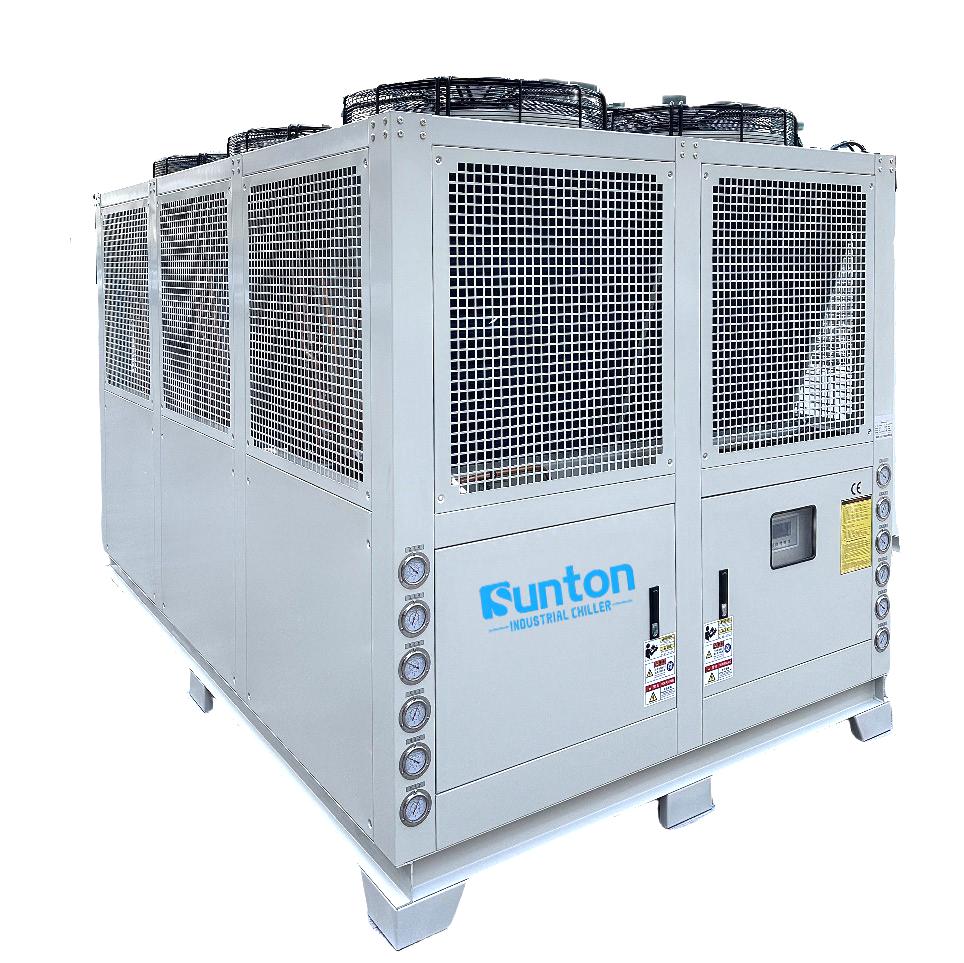
4. Qual o papel de uma torre de resfriamento neste sistema?
UM torre de resfriamento é frequentemente usado em conjunto com um refrigerador refrigerado a água para dissipar calor do sistema. Torres de resfriamento trabalhar expondo a água a ar ambiente, permitindo que parte dela evapore, o que por sua vez resfria a água restante. Isto legal a água é então usada para absorver o calor do condensador do resfriador. Em nossas configurações industriais, frequentemente integramos torres de resfriamento para aumentar a eficiência dos nossos chillers resfriados a água, especialmente em climas mais quentes ou durante períodos operacionais de pico.
O processo começa quando água morna do condensador do chiller é bombeado para o topo do torre de resfriamento. A água é pulverizada no corrente de ar, e um grande fã sopra ar através da água que cai. Isso promove a evaporação, que remove o calor da água. A água resfriada se acumula na parte inferior da torre e é bombeada de volta para a resfriador. Este processo contínuo garante que o resfriador pode operar de forma eficiente mantendo um fornecimento consistente de legal água para o condensador. Torres de resfriamento são particularmente importantes em indústrias como a de plásticos e borracha, onde o gerenciamento do calor gerado por máquinas é crucial. Descubra mais sobre o específico Torre de resfriamento.
5. Quais são os diferentes tipos de resfriadores?
Resfriadores são normalmente categorizados em dois tipos principais: chillers resfriados a ar e chillers resfriados a água. Chillers resfriados a ar usar ar ambiente para remover o calor do refrigerante, enquanto chillers resfriados a água usar água, muitas vezes em conjunto com um torre de resfriamento. Cada tipo de resfriador tem suas próprias vantagens e é adequado para diferentes aplicações. Em nossos processos de fabricação, frequentemente usamos ambos os tipos, dependendo dos requisitos específicos do projeto.
- Chillers resfriados a ar:
- Use ventiladores para soprar ar através do condensador para legal o refrigerante.
- Geralmente mais fácil de instalar e manter.
- Adequado para aplicações menores ou onde a água é escassa.
- Chillers resfriados a água:
- Use água para legal o refrigerante no condensador.
- Mais eficiente em termos de energia, especialmente em aplicações maiores.
- Frequentemente usado com um torre de resfriamento para dissipar calor.
Escolhendo o tipo certo de resfriador depende de fatores como o tamanho da aplicação, a disponibilidade de água e as metas gerais de eficiência energética. Por exemplo, a indústria eletrônica geralmente prefere chillers resfriados a água devido à sua maior eficiência e capacidade de lidar com grandes cargas de calor. Para saber mais sobre o Resfriador de água de parafuso resfriado a água.
6. Por que o tratamento de água é importante em sistemas de resfriamento?
Tratamento de água é um aspecto crítico da manutenção sistemas de resfriamento, especialmente para chillers resfriados a água. A água não tratada pode causar incrustações, corrosão e crescimento biológico, o que pode reduzir significativamente a eficiência e a vida útil do resfriador. Em nossa planta, implementamos rigorosos tratamento de água protocolos para garantir a longevidade e o desempenho dos nossos equipamentos.
Apropriado tratamento de água envolve o uso de inibidores químicos para evitar incrustações e corrosão, bem como biocidas para controlar o crescimento biológico. O monitoramento e o ajuste regulares da química da água também são essenciais. Ao manter a qualidade ideal da água, você pode evitar o acúmulo de depósitos nas superfícies de troca de calor, garantir uma transferência de calor eficiente e evitar reparos ou substituições dispendiosas. Isso é particularmente importante em indústrias como Laboratórios e Instituições de Pesquisa, onde desempenho e confiabilidade consistentes são primordiais.
7. Como você pode otimizar seu sistema de resfriamento e AHU?
Otimizando seu resfriador e Sistema AHU envolve várias estratégias-chave. A manutenção regular é primordial. Isso inclui limpeza de serpentinas, substituição de filtros, verificação refrigerante níveis, e garantindo o fluxo de água adequado. Na minha experiência, um cronograma de manutenção proativo pode evitar muitos problemas comuns e estender a vida útil do seu equipamento.
Outro aspecto importante é monitorar o desempenho do sistema. Ao rastrear o consumo de energia, água gelada temperaturas e taxas de fluxo de ar, você pode identificar ineficiências e fazer ajustes conforme necessário. A implementação de um sistema de automação predial (BAS) pode ajudar a automatizar esse processo e fornecer dados em tempo real sobre o desempenho do sistema. Além disso, otimizar as estratégias de controle para seu resfriadores e Unidades de terapia intensiva (UTAs) pode levar a economias significativas de energia. Por exemplo, usar acionamentos de velocidade variável em bombas e ventiladores pode ajustar a saída do sistema com base na demanda, reduzindo o consumo de energia durante os horários de menor movimento. Para a indústria gráfica, otimizar esses sistemas pode levar a uma melhor qualidade de impressão e redução de custos operacionais. Você pode se interessar em ler mais sobre o Resfriadores de glicol.
8. Quais são os problemas comuns com resfriadores e AHUs?
Vários problemas comuns podem afetar o desempenho de resfriadores e Unidades de terapia intensiva (UTAs). Refrigerante vazamentos, por exemplo, podem reduzir a resfriamento capacidade do resfriador e levar ao aumento do consumo de energia. Sujo serpentinas de resfriamento no UAC pode restringir o fluxo de ar e reduzir a eficiência da transferência de calor. Em nossa fábrica, inspecionamos regularmente esses problemas e os tratamos prontamente para manter o desempenho ideal.
Outros problemas comuns incluem falhas no compressor, bomba de água problemas e falhas elétricas. A manutenção e as inspeções regulares podem ajudar a identificar e resolver esses problemas antes que eles levem a grandes avarias. Além disso, treinar sua equipe para reconhecer os sinais de problemas potenciais pode ajudar a evitar o tempo de inatividade e garantir a operação contínua. Para a indústria de laser, resolver esses problemas prontamente é crucial para evitar interrupções nas operações de laser de precisão.
9. Como funciona o ciclo do refrigerante em um resfriador?
O refrigerante O ciclo é o coração de como um resfriador opera. É um loop contínuo onde o refrigerante muda de estado para absorver e rejeitar calor. O ciclo começa no evaporador, onde água gelada é resfriado. O refrigerante, em um estado de baixa pressão e baixa temperatura, absorve calor da água, fazendo com que ela evapore em um gás.
Em seguida, o compressor aumenta a pressão e a temperatura do refrigerante gás. Este gás quente e de alta pressão move-se então para o condensador. Em um refrigerador refrigerado a água, o água do condensador absorve o calor do refrigerante, fazendo com que ele se condense novamente em um líquido. Em um refrigerador refrigerado a ar, fãs soprar ar através do condensador para obter o mesmo efeito. O agora líquido refrigerante passa por uma válvula de expansão, que reduz sua pressão e temperatura, e o ciclo começa novamente. Este ciclo contínuo garante eficiência resfriamento e é vital para indústrias como a de usinagem, onde o calor gerado pelas máquinas deve ser gerenciado de forma eficaz.
10. Por que escolher nossos resfriadores de água industriais?
Como fabricante líder de produtos industriais resfriadores de água, temos orgulho em fornecer serviços de alta qualidade, confiáveis e eficientes resfriamento soluções. Nossas resfriadores são projetados para atender às necessidades específicas de várias indústrias, desde a indústria de plásticos e borracha até data centers. Usamos tecnologia avançada e rigorosos processos de controle de qualidade para garantir que nossos produtos atendam aos mais altos padrões. Por exemplo, nossos resfriadores utilizados na indústria química e farmacêutica são projetados para fornecer controle preciso da temperatura, crucial para reações químicas e estabilidade do produto.
Nosso compromisso com a satisfação do cliente nos diferencia. Trabalhamos em estreita colaboração com nossos clientes para entender seus requisitos exclusivos e fornecer soluções personalizadas que atendam às suas necessidades. Nossa equipe de engenheiros e técnicos experientes está sempre disponível para fornecer suporte e assistência, garantindo que seu sistema de resfriamento opera com eficiência máxima. Ao escolher nosso industrial resfriadores de água, você está investindo em um confiável e eficiente resfriamento solução que atenderá às suas necessidades nos próximos anos. Se você precisa de um refrigerador refrigerado a água para o seu Data Center ou um refrigerador refrigerado a ar para o seu processo de fabricação, temos a experiência e o conhecimento para fornecer a solução certa para você.
Perguntas frequentes
Qual é a principal diferença entre chillers resfriados a ar e resfriados a água?
Chillers resfriados a ar usar ar ambiente para remover o calor do refrigerante, enquanto chillers resfriados a água usar água, muitas vezes em conjunto com um torre de resfriamento. Chillers resfriados a água são geralmente mais eficientes em termos de energia, especialmente em aplicações maiores, enquanto chillers resfriados a ar são mais fáceis de instalar e manter.
Com que frequência devo fazer a manutenção do meu chiller e do sistema AHU?
A manutenção regular é crucial para um desempenho ideal. Recomendamos um cronograma de manutenção proativo que inclua limpeza de serpentinas, substituição de filtros, verificação refrigerante níveis, e garantindo o fluxo de água adequado pelo menos uma vez por ano. No entanto, dependendo da sua aplicação e uso específicos, pode ser necessária uma manutenção mais frequente.
Quais são os sinais de vazamento de refrigerante no meu refrigerador?
Sinais de um refrigerante vazamento inclui redução resfriamento capacidade, aumento do consumo de energia e sons sibilantes do resfriador. Se você suspeitar de um vazamento, é importante entrar em contato com um técnico qualificado para inspecionar e reparar o problema imediatamente.
Por que o tratamento de água é importante para chillers resfriados a água?
Tratamento de água é essencial para evitar incrustações, corrosão e crescimento biológico em chillers resfriados a água. Água não tratada pode levar à redução da eficiência, aumento do consumo de energia e reparos ou substituições dispendiosas.
Como posso melhorar a eficiência energética do meu sistema de refrigeração?
Melhorar a eficiência energética envolve várias estratégias, incluindo manutenção regular, monitoramento do desempenho do sistema e otimização de estratégias de controle. Implementar um sistema de automação predial (BAS) e usar acionamentos de velocidade variável em bombas e ventiladores também pode levar a economias significativas de energia.
Quais indústrias se beneficiam mais do uso de resfriadores de água industriais?
Muitas indústrias se beneficiam do uso de resfriadores de água, incluindo a Indústria de Plásticos e Borracha, Indústria de Usinagem, Indústria de Alimentos e Bebidas, Indústria Química e Farmacêutica, Indústria Eletrônica, Indústria de Laser, Indústria de Impressão, Indústria Médica, Laboratórios e Instituições de Pesquisa e Data Centers. Cada uma dessas indústrias tem características únicas resfriamento requisitos que nosso resfriadores são projetados para atender.
Resumo
- Resfriadores e unidades de tratamento de ar (UTA) trabalhar juntos em Sistemas HVAC para fornecer eficiente resfriamento.
- Refrigeradores resfriam água, que é então utilizada por Unidades de terapia intensiva (UTAs) para ar frio circulado por todo o edifício.
- Torres de resfriamento são frequentemente usados com chillers resfriados a água para dissipar calor do sistema.
- Refrigerado a ar e chillers resfriados a água cada um tem suas próprias vantagens e é adequado para diferentes aplicações.
- Tratamento de água é crucial para manter a eficiência e a vida útil do chillers resfriados a água.
- Otimizando seu resfriador e Sistema AHU envolve manutenção regular, monitoramento de desempenho e implementação de estratégias de controle de eficiência energética.
- Problemas comuns com resfriadores e Unidades de terapia intensiva (UTAs) incluir refrigerante vazamentos, serpentinas sujas, falhas no compressor e bomba de água problemas.
- O refrigerante ciclo envolve o refrigerante mudando estados para absorver e rejeitar calor, garantindo eficiência resfriamento.
- Nosso industrial resfriadores de água são projetados para atender às necessidades específicas de vários setores, fornecendo confiabilidade e eficiência resfriamento soluções.
- Escolhendo nosso resfriadores significa investir em qualidade, confiabilidade e satisfação do cliente. Nossa expertise em Resfriadores anti-explosão garante a segurança do seu equipamento.
Ao compreender a intrincada relação entre resfriadores, Unidades de terapia intensiva (UTAs)e torres de resfriamento, você pode garantir que seu Sistema HVAC opera com eficiência máxima, proporcionando um ambiente confortável e controlado para suas operações. Quer você esteja na indústria de plásticos e borracha, gerencie um data center ou trabalhe em qualquer outro setor que dependa de controle preciso de temperatura, nosso resfriadores de água são a solução perfeita para o seu resfriamento necessidades. Entre em contato conosco hoje para saber mais sobre como podemos ajudá-lo a otimizar suas sistema de resfriamento e atingir seus objetivos operacionais. Não hesite em descobrir também nossos Resfriadores industriais para galvanoplastia e Resfriadores industriais para pista de patinação no gelo.
